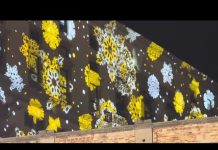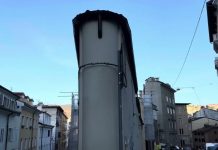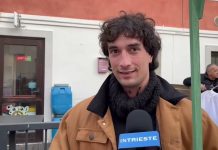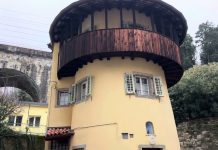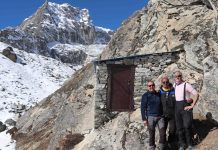by Nina Vaclavikova
Interviews: Michele Babuder, Trieste’s Councilor for Territorial Policies; Pierpaolo Roberti, Regional Councilor for Local Autonomy
One of Trieste’s busiest crossroads is set for a major transformation. On Thursday morning, city officials unveiled an ambitious redesign of Piazza Carlo Goldoni, a project they say will restore safety, accessibility, and a renewed sense of civic life to a central square long caught between heavy traffic and creeping neglect.
The plan—presented in the Sala Giunta by Michele Babuder, the city’s Councillor for Territorial Policies—proposes a sweeping reconfiguration of the space. It includes additional greenery, improved pedestrian routes, modernized lighting and surveillance, and the removal of structures that officials say have contributed to unsafe blind spots.
“Piazza Goldoni will be redeveloped with accessibility and public greenery at its core,” Babuder said, noting that the effort represents a coordinated push involving the Municipality of Trieste, the Prefecture, and the Friuli Venezia Giulia Region. “This is a high-impact social and security project. We want to return this central part of the city to its residents, ensuring that anyone crossing the square can feel safe.”
He was joined by Regional Councillor for Local Autonomy Pierpaolo Roberti, municipal councilor Alberto Polacco, the city’s mobility director Andrea De Walderstein, and Anna Nisi, who oversees municipal green-space projects.
A Security-Driven Urban Partnership
The initiative stems from an agreement between the Prefecture and the Municipality aimed at revitalizing an area that authorities say has become increasingly vulnerable to degradation. The redesign focuses on improving visibility for law enforcement and enhancing the usability of public spaces for both residents and newcomers.
The project secured €1,050,000 in regional funding under a 2023 law targeting integrated immigration-related interventions, specifically those that strengthen monitoring and public safety.
What Piazza Goldoni Looks Like Today
Currently, Piazza Goldoni comprises a pedestrian zone framed by cafés and shops, with tables and gazebos spilling into the open space. It is bordered by a distinctive set of elements:
— a “rain” fountain composed of nine interconnected portals on the southern edge,
— a glass monument dedicated to victims of totalitarian regimes,
— and along the eastern perimeter, a sandstone wall with built-in seating—one of the structures slated for removal.
The wall, officials say, has created pockets of limited visibility where illicit activity can more easily occur.
What Will Change
Planners have divided the redevelopment into five major categories: structural works, green interventions, public lighting, video surveillance, and upgrades to traffic and pedestrian infrastructure.
Structural changes include:
- removing two portals of the existing fountain to open up pedestrian flows;
- creating a new crosswalk;
- demolishing the sandstone wall that forms current blind corners;
- removing four pillars and their bases, as well as all existing benches;
- installing five new planters for urban greenery.
Green areas will gain:
- two newly planted trees;
- five landscaped planters with varied plant species.
Lighting improvements will feature:
- six projectors installed beneath the fountain’s remaining portals;
- five additional lighting points;
- three upgraded LED projectors.
Enhanced surveillance will introduce:
- two high-resolution “multisensor” cameras;
- one fixed 4K camera;
- three 180-degree multisensor units.
Traffic and accessibility updates include:
- eliminating the zebra crossing at the start of Via Silvio Pellico;
- upgrading existing crosswalks and removing architectural barriers along Passo Carlo Goldoni, Corso Umberto Saba, and Via Gallina.
A Year of Construction Ahead
Work is scheduled to begin in January 2026 and will continue for 365 consecutive days. The design team includes architects, engineers, a geologist, and surveyors, coordinated by project manager Andrea De Walderstein. Giorgia Gobbesso will serve as construction director, with Giorgio Tagliapietra overseeing safety.
City officials say they hope the redevelopment will give Piazza Goldoni a renewed identity—one rooted in visibility, inclusivity, and everyday usability. For a space that has long acted as a hinge between Trieste’s traffic-heavy arteries and its pedestrian center, the transformation signals a broader shift toward reclaiming urban areas that residents once avoided.








